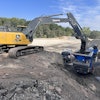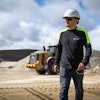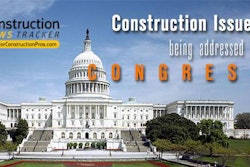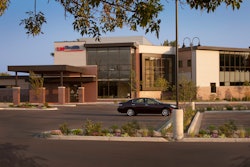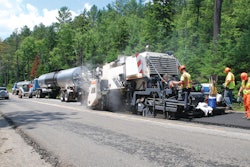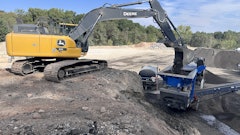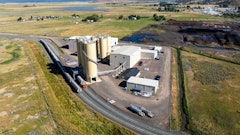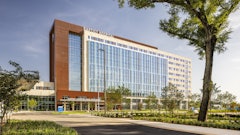
Green building will continue its rapid expansion globally in 2013 in spite of ongoing economic difficulties. More people are building green each year, and there is nothing on the horizon that will stop this MegaTrend or its constituent elements. However, the continuing slowdown in commercial real estate and the lower level of government project development will continue to put a crimp in new green building projects.
In putting together my Top Ten trends for 2013, I’m taking advantage of conversations I’ve had with green building industry leaders in the U.S., Europe, Asia, the Middle East and Australia during the past year.
Jerry Yudelson Associates’ Top Ten Green Building MegaTrends for 2013:
- Green building in North America will rebound strongly in 2013, using LEED project registrations as a proxy for this growth. The reduction in commercial real estate construction has not been offset by other sectors such as government construction, which continued to falter, and so the growth rate of new green building projects fell dramatically from 2010-2012. Even so, in 2012, new LEED construction accounted for about 20% of all put-in-place space, with domestic LEED project registrations up significantly from 2010. However, we continue to foresee faster growth in green retrofits, and note that surging college and university projects, along with NGO activity, are serving to backstop the fall in commercial and governmental construction. In addition, LEED growth has been and will be rapid in China, the Middle East, Latin America and other fast-growing regions for new buildings.
- The focus of the green building industry will continue to switch from new building design and construction to greening existing buildings. For the past three years, LEED for Existing Buildings Operations and Maintenance (LEED-EBOM) has been fast-growing rating system, with cumulative floor area in certified projects now greater than in new construction. My book, Greening Existing Buildings, documents the strategic and tactical components of this trend. One driver of this MegaTrend is that “‘green’ buildings have rents and asset prices that are significantly higher than those documented for conventional office space, according to recent major academic research studies on new and retrofitted commercial buildings in the U.S. and Europe. In addition, institutional owners and investors are increasingly focused on the sustainability performance of real estate in their portfolios, as evidenced by the GRESB annual survey.
- Green Buildings will increasingly be managed in the “Cloud,” represented by the large number of new entrants and new products in fields of building automation, facility management, wireless controls and building services information management in 2011 and 2012. In fact, we’ve dubbed 2013, “The Year of the Cloud” for how quickly this trend will manifest.
- Awareness of the coming crisis in fresh water supply, both globally and in the U.S., will increase, leading building designers, owners and managers to take further steps to reduce water consumption in buildings by using more conserving fixtures, rainwater recovery systems and innovative onsite water technologies. My recent book, Dry Run: Preventing the Next Urban Water Crisis,shows how this is being done in green buildings all over the developed world.
- The global green building movement will continue to accelerate, as more countries begin to create their own green building incentives and develop their own Green Building Councils. Nearly 90 countries with incipient or established green building organizations will drive considerable green building growth in 2013. We’re seeing strong growth in China, other places in Asia such as Singapore, Brazil, much of Europe, South Africa and the Arabian Peninsula countries. At the end of 2012, 40 percent of all LEED-registered projects were located outside the U.S. LEED projects are now being pursued in more than 130 countries, with the USGBC’s “Alternative Compliance Path” serving to facilitate the process.
- Zero-net-energy buildings will become increasingly commonplace, in both residential and commercial sectors, as LEED and ENERGY STAR certifications have become too commonplace to confer competitive advantage among building owners. Developers of speculative commercial buildings will also begin to showcase Zero-net-energy designs to gain marketplace advantages. Seattle’s 50,000-sq.ft. Bullitt Center, the largest such commercial office building, also registered for certification by the Living Building Challenge, is scheduled to open early in 2013.
- Performance disclosure will be the fastest emerging trend, highlighted by new requirements in California (AB32), the City of Seattle and many other jurisdictions. Commercial building owners will have to disclose actual building performance to all new tenants and buyers and in some places, to the public at large. This trend is already well-established in Australia and will spread rapidly as the easiest way to monitor reductions in carbon emissions from commercial and governmental buildings. We should note that only a handful of European Union member states had actually implemented disclosure by summer 2012, despite the EU’s pioneering this requirement in its 2002 Energy Performance in Buildings Directive.
- Transparency and “Red List” chemicals will become a subject of contention, as manifested through such tools as the new Health Product Declaration and the inclusion of points for avoiding certain chemicals contained in LEEDv4, scheduled for release in June 2013. Environmental Product Declarations will appear in large numbers in the next two to three years as building product manufacturers increasingly try to gain or maintain market share based on open disclosure of chemical ingredients. I believe that there is huge potential for litigation here, as building owners and occupants begin to claim harm from chemicals in building products and architects, engineers and builders increasingly try to avoid liability from specification and use of such products. Think of the mess that arose around asbestos in building products and now multiply it a hundredfold, with lawsuits stemming from the use of building products with chemicals that are known carcinogens, endocrine disruptors, etc.
- Local and state governments will step up their mandates for green buildings for both themselves and the private sector. We’ll see at least 20 new cities of significant size with commercial sector green building mandates, mostly in the “Blue” states. The desire to reduce carbon emissions by going green will lead more government agencies, universities, hospitals and corporate owners requiring green buildings from design and construction teams. As before, this effort will remain largely focused on the coastal states in the US, along with selected major cities with strong green building histories such as Dallas, Denver, Chicago and Atlanta.
- Solar power use in buildings will continue to grow given the prospect of aggressive state-level renewable power standards for 2020 and the move toward zero-net-energy buildings. As before, third-party financing partnerships such as Solar City will continue to grow and provide capital for large rooftop systems on warehouses and retail stores, as well as on homes. However, we will see fewer very large solar and wind systems, as federal support is phased out.

